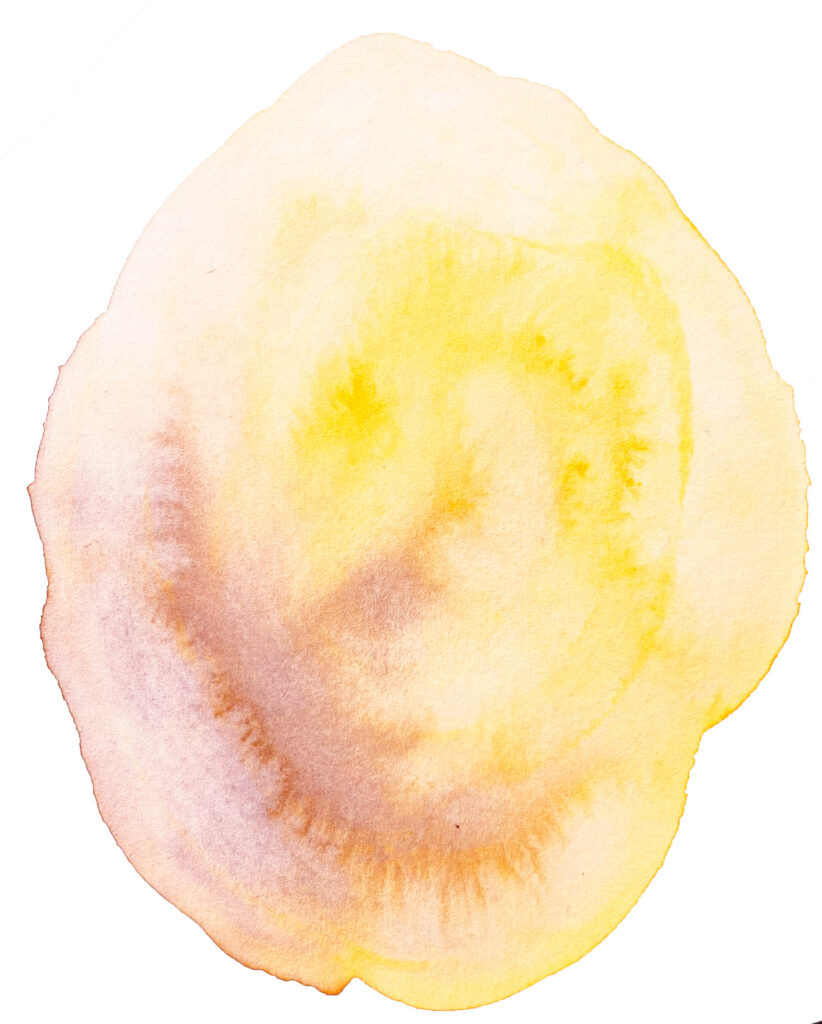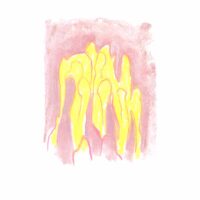Like a wave, deep powerlessness is flowing through the world. It means the unimaginable has happened. We are stunned. What does it mean to be a human being in this time and to see events in a living context, rather than myopically?
On its front page, ‹Die Zeit› (March 2, 2022, N. 10) asked: ‹How can we help?› Just watching seems unbearable. But how to help? Do arms deliveries help? Do sanctions help? What does ‹help› mean? Of course, help is to be provided – impressive solidarity has manifested itself – but the situation continues to harden in itself. There are fewer and fewer openings that could take a different turn. Analyses and comments are mixed up. One clings tightly to different explanations until one is again overwhelmed by the complexity of the whole. Immediately under ‹How can we help?› the first editorial of ‹Die Zeit› read: ‹How can we defend ourselves?›
This is where the experience of powerlessness begins. As deeply as possible, powerlessness drills into the soul. This alone makes it one of the most profound experiences in which a person can participate. Only the experience of love has a similar signature. They both are total occupations, leaving no way out. Fear and hopelessness gain the upper hand in powerlessness. One feels paralyzed inside. You can’t withdraw from powerlessness, because there is no going back. And at the same time, it looks like there’s no going forward either. What can carry us forth, when everything seems ineffective? Who carries me?
The Consciousness Soul as an Eyepiece
Christiaan Huygens (April 14, 1629–July 8, 1695) was one of the greatest scientists of Modernity. He lived in an exciting epoch of extreme, turbulent political upheaval, where – as he wrote – «people were in love with their ideas» and wanted to assert the «right of ownership» over ideas themselves. The origin, rather than the content of ideas became increasingly important. Time and space were measured, maps became more and more accurate, and borders were drawn over land and sea. Heaven and earth were subdivided.
Both mathematician and inventor, Huygens discovered, among other things, the rings of Saturn and its moon Titan. He owed this discovery to his eyepiece, a system built of two lenses for magnification in telescopes and microscopes. He was thus able to draw to himself that which he could not approach, in such a way that he separated it from wholeness, from context. His eyepiece was basically directed at the eye, not at the starry sky; it took out of context the one thing that was desired by the viewer. The eyepiece becomes the eye (oculus). Huygens had the image of Saturn closer than ever before, but at that moment lost the human perspective, both the totality of the starry sky and the connection with fellow human beings. What he saw, he saw alone. And the scientific conclusions that he could derive from it, he appropriated. They became his ‹own›, signed by him and receiving his name, the Huygensian eyepiece, just as was customary for his contemporaries.
One of the characteristics of today’s consciousness is the initial inability to put oneself in the position of the ‹other› – fellow human beings as well as everything we call ‹world› and ‹nature›, the others which make otherness present in each of us. The situation of the other and of otherness can indeed be observed and perceived, even interpreted in every detail, but we remain ‹outside the door›. We remain unable to experience a situation from within, that is, in context. Even if we can make ourselves aware of every fact, we are not yet ‹in it›. Every occurrence arises from a configuration of constantly stringed together events, facts that have already taken place. As a result, events, despite their differences, have in common that they have already happened. They are from the past. Their single-stemmed, living relationship with each other is no longer operant.

Bourgeois society liked to use binoculars in the theatre and operas to get close to an actor or singer and to have a moment to themselves. This can be considered a charming trait of a certain era, but on closer inspection, it is also a clear example of how our awareness of the outside world has shifted. Very often we experience events on the screens as they are presented to us as if on a stage, without us having the opportunity to intervene immediately. In this setup, we change our thinking, feeling, and willing in such a way that we arrange what is happening near or far, zoom in and out, turn on any desired foreground, and cast others as background. Only in times of crisis, as we are experiencing it now, does this become obvious to us. For example, it is obvious in reporting: every fact, at the moment when it ‹collapses›, becomes a picture detached from context, separated and enlarged. It arises from a conscious eyepiece. Because it falls out of context, we can enlarge it. And vice versa: because we enlarge it, it loses its living connection to wholeness. We thus become spectators of our time. We are outside of current affairs, not inside. This is a stage in today’s development of consciousness. But are we condemned to watch?
Because the closeness of the other, so often longed-for, does not prove to be self-evident, as naturally occurring, we try to pull the other in. And just as, seen through an eyepiece, we are a single element abstracted from the totality, in this way one is enlarged beyond one’s self. Such enlargements can be found en masse on social networks, from TikTok to Instagram. Even if they are real, their resolution remains out of context from living context, often. The distinction between true and false, real or fake – however important it is – is not the only one! There is also the even more difficult difference between outside and inside a context. And because an instantaneous enlargement meets our need for immediate reassurance and control, we shy away from looking at the context.
First Love
Every human being comes into the world with a potency carried by the ‘I’: the ability of first love. This first love is a pure beginning, that is, it has no object, no destination. It also has no cause. It is original: the origin of its essence and its realization. The first love manifests itself in attention as an intention, which then develops further as an ability. In the very small child, it shows itself in his unconditional openness to everything that he encounters. This alone distinguishes the first love from all further exercises of this faculty. But this does not mean that it can only take place once. Because it begins as a pure setting-in-motion of potentiality, which can and will only find its purpose during movement, it is every time beginning and new. It depends on how attention is exercised. It is the power of devotion that is exercised without any foresight or predetermination of what will meet that devotion.
No one has portrayed and lived this potency of pure attention as insightfully as Simone Weil. She has never given up tracing the original source of every human creative power, including those in herself—a sign of her absolute humanity.
IIn ‹Gravity and Grace› she writes: «The creative capacity in human beings springs from the highest attention, and this highest attention will always be a religious one. The amount of creative genius of an era is strictly proportional to the amount of the highest attention, that is, the amount of authentic religion in an era.» And also: «Attention completely purified of every admixture is prayer.» 1
In a small pamphlet: ‹What does ‘contemporary’ mean?› the Italian philosopher Giorgio Agamben wrote the following: «One who is contemporary does not allow themself to be dazzled by the lights of their time, but is able to grasp their shadowy parts. […] The one who looks at the darkness of their time as a matter that has to do with them. As something that turns to them far more than any light and concerns them in particular. They are a contemporary who presents their face entirely to the bundle of darkness that emerges from their time.»2

In this writing, developed during a year of study at the University of Venice, Agamben calls for an encounter with the darkness face-to-face, for the contemporary to face the dark entirely, so that the light that has been scattered and wrestled into the darkness may not be abandoned. By turning completely toward darkness, the light gets the chance of a new beginning, that is: to gather again and to recreate oneself in its place of origin – as if it were the first time.
What is portrayed by Agamben is a radical change of perspective, which can still be found in a completely different way in Rudolf Steiner’s thought as the change of perspective from fact to symptom, from what has become to what will become:
«We know from previous lectures I have given on similar topics that, from the point of view of Spiritual Science, one has to see what is usually called history transformed into symptomatology. That is, from the point of view that I am referring to here: what one usually receives as history, what is recorded in what is called history, in school, should not be regarded as a really meaningful course of humankind’s development, but one should only see it as describing the symptoms that take place on the surface and through which one has to look for further depths of events, which then reveal what is actually reality in the becoming of humanity.
While history usually looks at the so-called historical events in their absoluteness, here what is called historical events is only to be seen as something that, in a sense, betrays a deeper, underlying, true reality, and, if viewed correctly, reveals it.»3
That which Rudolf Steiner calls historical events here – events as things that have fallen out of context – are to be transformed in a direction in which reality can reveal itself in the becoming of humanity. It’s about reversing one’s outlook. In this sense, every look at becoming is a new beginning. By its very nature, becoming cannot be enlarged. Any enlargement would distort the becoming, even bring it to a standstill. With this view of becoming, one cannot separate oneself from it and separate from it.
Second Love
Discovering the possibility of isolating oneself within oneself is the first step on the path from spectatorship to contemporaneity. The first love with which I came into the world opens up for me the possibility for me to recognize this fully. It is an insight into evil, for the essence of evil is separation, separation from a living context. Evil, insofar as it has acted as fact and event, is still there. That’s when I wake up. I still perceive it. But what is now opening up in me is that I carry within me, fortunately, the possibility of every form of evil. At this point, Rudolf Steiner speaks of ‹inclination› and of ‹initiation into the mystery of evil›.
There is no crime in the world to which every human being has the subconscious inclination, insofar as we are members of the fifth post-Atlantic period. Whether in one case or the other the tendency to evil leads to an outwardly evil act depends completely on different conditions rather than on inclination.4
How can I recognize this inclination in myself? Am I able to do so? To recognize the evil in me as an ‹inclination› is not the same as awareness of the effects of evil in the external world. It is an encounter, an encounter that can only take place in myself. I am the only person who can do it. And as an encounter, it needs a space, an inner space that I can only create myself. It is a space in which I can listen and in which resonance can arise. At the same time, it is also in this space that powerlessness has stopped me, where I could not continue. But since I have changed my outlook, this room opens up again. The unbearable remains unbearable. And I still can’t bear it. But I can stay awake, stay with it, even for just a short moment.
At this moment, when I acknowledge the evil within me, the plight of my time becomes apparent. I am initiated into the nature of current affairs and this being bears the signature of evil. But now, I am face-to-face with current events, without an eyepiece between us. The acute or chronic distress I feel while watching is no longer just my own, but the need of the time. Not only do I gain this knowledge, but it takes place within me; it becomes the truth.
The experience of powerlessness, in which I could not and cannot carry myself, has enabled me to absorb and carry something other than myself. The separation is lifted for a moment. I become a co-bearer, I testify to my time and others carry me.
The second love begins: «Love is freely given, And separation is no more.» (Novalis)
Footnotes
- S. Weil, Gravity and Grace. Translated from French by Friedhelm Kemp. Matthes & Seitz, Berlin 2021, p. 127–129.
- Giorgio Agamben, Qu’est-ce que le contemporain? Rivage Poches, Petite Bibliothèque 2008.
- Rudolf Steiner, Das Heraufkommen des Bewusstseins-Impulses. First Lecture, Dornach, October 18, 1918, in: ders., Geschichtliche Symptomatologie, GA 185, Dornach 1982, p. 9 f.
- Rudolf Steiner, October 26, 1918, in: Geschichtliche Symptomatologie, GA 185, 2. Edition, Dornach 1962, p. 107.






Articles in English version are greatly appreciated. Thank you very much for your work.